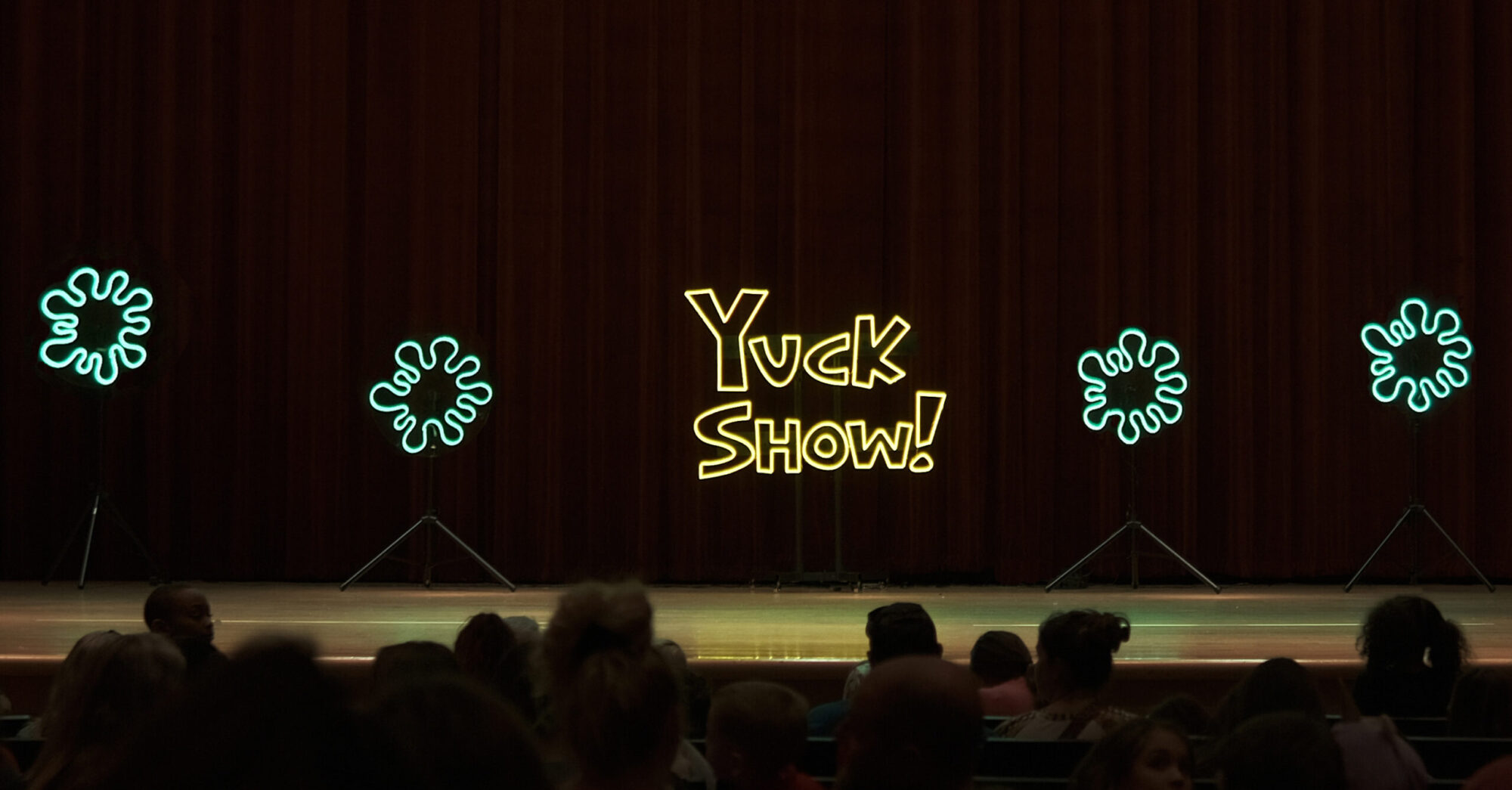I’ve gotten a lot of questions about how to make your own popsicle stick chain reaction after featuring a small chain in the Yuck Science video program.
How to Weave Your Sticks!
First off, while I have the most fun calling these popsicle sticks, they are actually jumbo craft sticks, more the size of tongue depressors like a doctor uses, measuring 6 inches by 3/4 inch. You can try regular popsicle sticks, but they are thicker and work less well.

Step 1.
Make a tic-tac-toe shape out of four sticks. The sticks are colored so that you can see how they cross easily.

Step 2.
Add a cross piece that weaves between three of the sticks. This holds that end in place. Keep a hand on the other end or your chain reaction will happen early! This happens to everyone a few times while they learn. Don’t get frustrated! Soon you’ll be a pro!

Step 3.
Continue by adding a stick that weaves between the two sticks on the bottom.

Step 4.
Then add a stick that crosses the last one you added, weaving between two of the sticks as well.

Step 5.
Keep going! Add a stick that crosses the last one you added again. If the sticks you are supposed to weave through don’t have enough length for your new stick, you may need to move them over. I almost ran out of room here!

Step 6.
Keep going! You should be getting the hang of it now, but if it takes some time, be patient with yourself! It can be tricky to master! To stop, add another cross piece on the bottom, like the red stick you added in Step 2. This will allow you to take your hands off!
Step 7.
When you are ready to start your chain reaction, remove the first stick!
The Science!
What’s happening here? The sticks are bent and woven together, which creates tension. That tension is called stored energy or potential energy. When you release the stick from the end, the tension is released making the sticks fly through the air. This movement is called kinetic energy.
Kinetic energy is the energy of something in motion. That’s a big word for a young scientist, but you are more familiar with it than you think! Your PE coach studied kinesiology in school! That’s the science of exercise and body movement. Do you see the similarities in the words? Both start with the letters KINE! That comes from an ancient Greek word kinēsis which means . . . movement or motion!
Working with popsicle sticks shows potential energy and kinetic energy very simply. Bending the popsicle stick “stores” potential energy until you convert it to kinetic energy by releasing it. It almost sounds like too many words to describe something so simple, right? But there are tons of real life applications!

Application?
A fun application is a roller coaster! Roller coaster designers think about potential energy all the time to calculate how much energy is needed to move a roller coaster car through a track in a fun and safe way! At the tippy top right before a big drop, cars have their highest potential energy. As they fall, their potential energy falls as their kinetic energy increases, maybe even enough to propel them up another peak!
The roller coaster might move along the track endlessly as potential and kinetic energy balance back and forth, but other factors make it lose speed, requiring designers to know the right places to help carry the cars back up to the next . . . BIG . . . DROP!



Wow, you put a lot into this. Video, step by step photos, color coded popsicle sticks, and a simple, relatable discussion of the science. Thanks for all the effort.
I appreciate your comments, Clay. Be sure to subscribe! There are a lot entries on the way!
This one looks great. We are going to try it this weekend.
We did this! It went across the room!
We enjoy your work, thanks for sharing all these entries.
Really cool, really thorough. We’ll give it a try!
We want to try this, thank you for the directions!